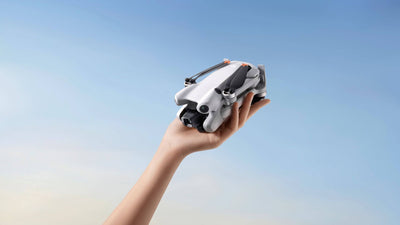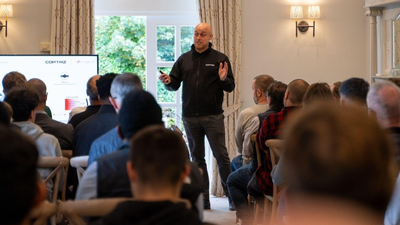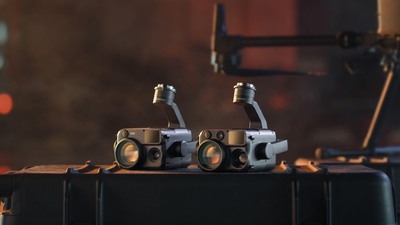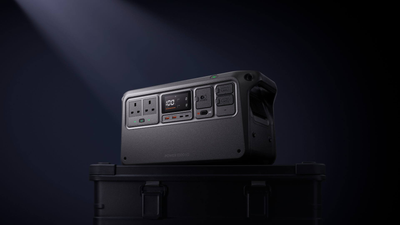Will Drones Replace Police Helicopters?
- by Stefan Gandhi
From hobbyist quadcopters to professional aerial machines, the rise of drone technology has captured the imagination of UK consumers. Yet a recurring question among enthusiasts and professionals alike is straightforward: could drones one day supplant the mighty police helicopter? In this article we unpack that question with clarity, examining the current state of affairs in the UK, the technological and regulatory landscape, the practical strengths and limitations of drones in policing, and what that means for the consumer drone space.
Aerial Policing In The UK
In England and Wales, the bulk of air support for policing is provided by a fleet of crewed helicopters. These aircraft play pivotal roles in pursuits, missing person searches, major incident response and large public order deployments. Their presence offers a long range, high altitude vantage, rapid deployment across jurisdictions and a manned crew ready to adapt in complex, dynamic environments.
At the same time, police forces across the UK are increasingly deploying drones, smaller unmanned aerial vehicles operated by ground based pilots, to support investigations, scene documentation and search operations. Currently, drones serve as a complement rather than a replacement, offering agility and cost efficiency for tasks where helicopters are not required.
Why Drones Are Making Inroads
There are compelling reasons why drones appeal to law enforcement agencies and why UK consumer drone users should pay attention.
Cost, Efficiency & Versatility
Helicopters remain expensive to purchase, maintain, fuel and crew. Drones, by contrast, cost a fraction and can be deployed swiftly. From the consumer side, every advancement in sensor quality, flight time, autonomous features and data link reliability filters down to the hobby or prosumer market. A drone now can carry high definition cameras, thermal sensors, night vision payloads and many of the conveniences once reserved for professional aerial platforms.
Improved Mission Capabilities
Unmanned aircraft are capable of staying airborne for extended periods, flying at altitudes and speeds approaching those of crewed platforms in test scenarios. For consumers this means what was once niche enterprise tech is being refined and eventually becomes more accessible. The trickle down effect is real. Features tested in policing could turn up in premium consumer models or accessories targeting prosumers or industrial users.
Permit Long Range & New Roles
Drones can access difficult terrains, hazardous zones, cordoned scenes and vantage points where a helicopter might be impractical, dangerous or costly. Many police forces list cliff faces, quarries, rivers and unstable structures as prime drone tasks. From a creative hobbyist perspective this means more airborne access, more angles, more remote filming possibilities. The regulatory push towards beyond visual line of sight operations in the UK means the bounds are shifting.
Why Helicopters Aren't Going Away Just Yet
Despite the growth of drone utilisation, there are key reasons why crewed helicopters remain vital in policing and why drones will not replace them overnight.
Speed, Endurance, Payload & Multi-Crew Flexibility
Helicopters carry heavy sensors, multiple crew members and can fly for longer under varied conditions. They respond to high speed pursuits, support aerial deployments of ground units and provide broad situational awareness, capabilities that typical consumer drones or even many enterprise drones cannot match.
Regulatory & Air Space Challenges
In the UK, many drone operations remain constrained by visual line of sight rules, air space clearance requirements, weather limitations and technical maturity. Even police trials with unmanned aircraft emphasise these craft are not immediately replacing crewed craft but adding capability.
Safety, Complexity & Critical Incident Realism
Policing missions involve high complexity, dynamic decision making and risk scenarios where the judgment of a human crew remains critical. Maneuvering around fast moving vehicles, identifying suspects, coordinating with ground units, and balancing risk to life and property are areas where a helicopter crew excels.
What This Means For The Consumer Drone Market In The UK
Whether you are a creative hobbyist, a professional user or an outdoors enthusiast, the evolving relationship between drones and police aviation offers several takeaways.
Innovation Trickle Down
The more police and emergency services adopt drones, the faster the advancement of sensors, mission software, autonomous features and air frame durability. That means better value, more platforms and faster refresh cycles for consumer drones. Expect improvements in flight time, safety features, remote intelligence and integration with data tools.
Regulatory Maturity
As UK agencies test beyond visual line of sight operations, the regulatory framework around drones will continue to mature. This will benefit consumers by clarifying what can be flown where, when and how. It also raises the bar for safety, insurance and operator training and will likely accelerate the acceptance of drones in more varied environments.
Value Positioning
If you are buying a drone in the UK, you can leverage this momentum. Higher grade sensors or software once reserved for professional use will increasingly trickle down into prosumer drones. If you invest in stability, reliability and advanced features you are buying into tech that is also being trialled at the upper echelons of use.
Differentiated Usage Cases
Understanding that drones are not simply cheaper helicopters helps you target the right machine for the right job. For creative hobbyists, drones excel in cinematic work. For professionals they offer workflow integration. For outdoors enthusiasts the portability and immediate deployment matter. The police use case reinforces that drones excel at certain tasks, search, documentation, persistent surveillance, but may not yet be suited for high speed aerial interception.
The Likely Future Scenario
Rather than a dramatic replacement, the most realistic outcome for the UK is a blended fleet. Drones will take on more roles previously handled by helicopters, especially searches, static surveillance, remote first response, cordon monitoring and detailed imagery capture. Meanwhile helicopters will continue to handle the highest risk, highest speed, highest complexity operations.
For UK consumers that means the innovation curve will accelerate. Expect to see drones that are more capable, more autonomous, more reliable and more integrated into workflows. But also expect that regulation, safety and training will play an increasing role in differentiating good operators from casual flyers.
In the next few years we may see UAVs that match many helicopter tasks in performance for specific roles, especially in remote or controlled airspace, but not yet entirely replace them in policing. That means for drone buyers the window of rapid upgrade is now. Investing in a high quality platform positions you for the next generation.
FAQs
Will drones make police helicopters obsolete in the UK?
Not in the short term. The current approach is a blended fleet of crewed and uncrewed aircraft. Drones are taking on selected tasks but helicopters continue to be required for high complexity missions.
Can consumer drones perform police type missions?
Consumer drones are improving rapidly, but mission grade tasks such as pursuits, high altitude search, night operations and heavy payloads still lie mostly in the domain of professional craft. That said, many features from those craft will filter down into consumer models.
What regulatory changes are impacting drone deployment in policing?
The UK is actively trialling beyond visual line of sight operations and refining air space integration rules. These regulatory shifts will allow drones to operate further, longer and in more complex missions, benefiting both public sector use and consumer adoption.
Does this evolution affect how I choose my next drone?
Yes. If you are a UK consumer buyer, now is a good moment to prioritise reliability, sensor performance, battery life and data tools rather than just price. The technology is moving fast and buying a solid platform means you will remain relevant for longer.
Should I expect drones to replace police helicopters in my local area?
Likely not entirely. Local forces are increasingly using drones for certain tasks, but helicopters remain deployed. Drones may support scene imagery, initial search deployments or cordon monitoring, but helicopters still provide rapid response and high complexity coverage.
Conclusion
For UK consumers in the drone space the rising use of UAVs by policing agencies signifies a broader shift. Drones are carving out important roles, innovation is accelerating and regulatory clarity is evolving. While helicopters are not about to vanish from aerial policing, drones are steadily encroaching on many of their tasks. That means exciting opportunities for you as a buyer, flyer and creator. If you are considering your next drone investment in the UK market, now is the time to choose wisely.
Explore the latest models now at the Coptrz official online store and equip yourself for tomorrow's skies.




